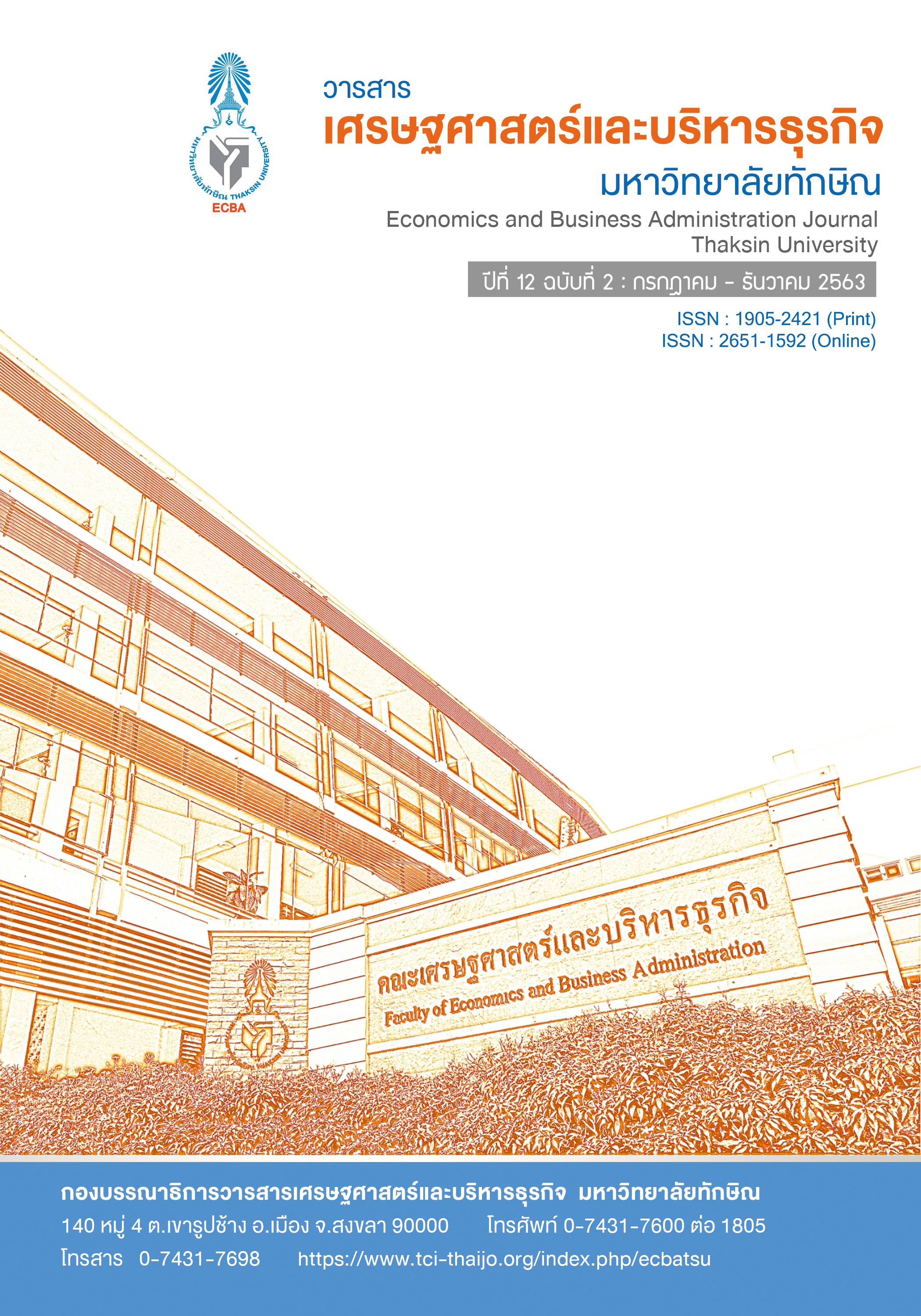The Routes Transportation by Comparison between Using the Saving Algorithm and the Nearest Neighbor Algorithm
Keywords:
Routing, Savings Algorithm, Nearest Neighbor Algorithm, Transportation CostAbstract
This research is to arrange the transportation route of the case study comparing between routing using Saving Algorithm and Nearest Neighbor Algorithm. With the objective to study the traditional shipping path of the company, case study And analyzed to compare the new routing to be able to reduce transportation costs the results from the comparative analysis of the two methods are as follows: 1. Alignment by using the Saving Algorithm method, resulting in 3 transportation vehicles with a total distance of 513.59 on average. Kilometers per day Can reduce the total distance of 429 kilometers per day, cost reduced by 57.37%. 2. Routing by using The Nearest Neighbor Algorithm makes it possible to use 3 transportation vehicles with an average total distance of 405.68 kilometers per day, costs reduced by 58.42%
References
Chaiwongsakda, N. and et al., (2015). Arranging transportation routes using safe running algorithms and models : Traveling salesman problem case studies of drinking water factories. TJOR, 3(1), 51-61.
Clarke, G. & Wright, J. (1964). Scheduling of vehicles from a central depot to a number of delivery points. Operations Research. 12(4). 1964. 568-581.
Government Savings Bank (2018). Sunrise – Sunset Industry, 2018 . Retrieved from https://www.gsbresearch.or.th/wp-content/uploads/2018/02/IN_transport_61_detail.pdf
Hongsuwan, P., Chantaraksa, W. & Chuapisutikul, S. (2013). Education for increasing the efficiency of drinking water transportation route Samut Songkhram province.Master degree engineering thesis, Mahidol university.
Limwatanakun, K. (2015). Freight routing and truck area management 4 Wheels. Master of science thesis. Bangkok; University of technology metropolis.
Manangam, A. & Sri Pathom Sawatdi, K. (2015). Solving the problem of vehicle routing with Limited time for large trucks By heuristics. Case study: transportation of bricks in Bangkok and perimeter. Master's thesis, Technological college industrial, King Mongkut's university of technology north Bangkok.
Nadarajah, S. & Bookbinder, JH. (2007). Less-Than-Truckload carrier collaboration problem: modeling framework and solution approach. Journal of Heuristics. 19(6). 917-942.
Rinmukda, W., Phitphibun, T., Srisuknam, K. and Watthanawonwong, A. (2016). The Study of the Appropriate Freight Routing Model for Reducing Freight Costs: A Case Study of Fruit Selling Company ABC. Panyapiwat Institute of Management.
Si Mueang, K. (2007). Finding the number of trucks that are suitable for transportation of goods in the retail business. A case study of Tops Supermarket. Master of engineering thesis, King Mongkut's university of technology north Bangkok.
Songkhan, C., Santichuwong, N. & Tan Klang, W. (2015). Solving the time line transport problem by heuristics A case study of an automotive parts manufacturing company. Master thesis, Engineering and architecture, Rajamangala university of technology Bangkok.




